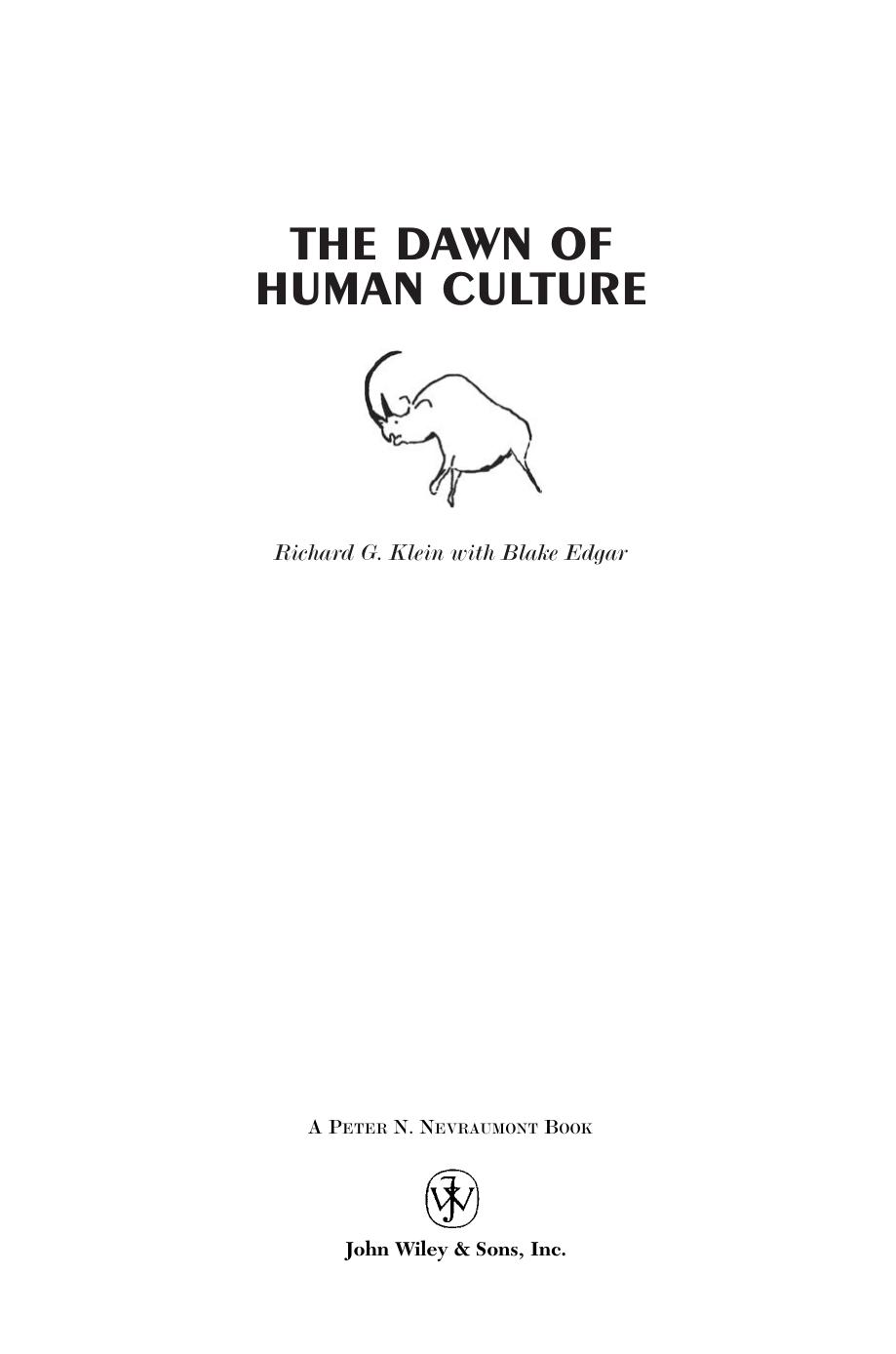The Dawn of Human Culture by Richard G. Klein

Author:Richard G. Klein [Klein, Richard G.]
Language: eng
Format: epub, azw3, pdf
Tags: 0471252522
Published: 0101-01-01T00:00:00+00:00
* * *
Human stomachs are poorly equipped to digest raw muscle fiber, and without fire people before 250,000 years ago might have had little incentive to hunt. Yet, it is difficult to imagine that people could have colonized Europe 500,000 years ago if they were not active hunters, and excavations at Schöningen, Germany, have now provided incon-trovertible proof. It is perhaps no coincidence that Schöningen is 05 Humanity Branches Out.r.qxd 1/29/02 5:05 PM Page 158
158
| THE DAWN OF HUMAN CULTURE
prominent on the list of sites that contain ancient, if admittedly tentative, evidence for fire.
Schöningen is an active, open-cast, brown-coal mine that just happens to contain one of the most informative early archeological occurrences in Europe. In October 1994, less than two weeks remained before the mining company’s giant rotor digger was scheduled to oblit-erate the site. German government archeologist Hartmut Thieme and a colleague were working to recover the maximum possible number of stone artifacts and animal bones, when they unearthed a short wooden stick that had been artificially pointed at both ends. The Schöningen deposits are dense and waterlogged, meaning that they are relatively airtight, and it was this unusual circumstance that preserved wood.
Ancient wooden artifacts are the archeological equivalent of hen’s teeth, and the discovery bought Thieme another excavation season. The following year, in a layer dated between 400,000 and 350,000 years ago, he uncovered three unmistakable wooden spears, each between 2 and 3
meters (6.5 and 10 feet) long and carved from the heartwood of a mature spruce tree (Figure 5.7). Nearby, he found bones from at least ten wild horses, many of which showed fractures and cut marks from butchery.
Thieme concluded that stone-age hunters, lurking near the margin of a former lake, had ambushed the horses, driven them into the water, and then quickly dispatched them with the spears.
He published his discovery in a February 1997 issue of Nature magazine that also included a startling report on the cloning of Dolly the sheep. The public was captivated by the cloning, but archeologists took note of the spears. Before Schöningen, only two other sites had provided comparable objects. One was Clacton in England, where deposits that were probably about the same age as those at Schöningen 05 Humanity Branches Out.r.qxd 1/29/02 5:05 PM Page 159
Humanity Branches Out | 159
0
0
50 cm
2 ft
FIGURE 5.7
Wooden spears from
spear 1
Schöningen, Germany
(recovered in 5 parts)
spear 2
(redrawn after H. Thieme
Schöningen
1996, Archäologisches
Korrespondenzblatt 26,
fig. 9).
05 Humanity Branches Out.r.qxd 1/29/02 5:05 PM Page 160
160
| THE DAWN OF HUMAN CULTURE
had produced a 30-centimeter (1-foot) long pointed wooden object that could be a spear tip. The other was Lehringen, Germany, where deposits that are probably about 125,000 years old had provided a complete spear from among the ribs of an elephant.
In his description of the Schöningen spears, Thieme emphasized that they were heavier towards the business end and tapered towards the back, like modern javelins. From this he argued that they were designed for throwing. Archeologist John Shea of Stony Brook University, who has investigated the evolution of projectile weapons,
Download
The Dawn of Human Culture by Richard G. Klein.azw3
The Dawn of Human Culture by Richard G. Klein.pdf
This site does not store any files on its server. We only index and link to content provided by other sites. Please contact the content providers to delete copyright contents if any and email us, we'll remove relevant links or contents immediately.
The Leavers by Lisa Ko(6513)
Born to Run: by Christopher McDougall(6315)
iGen by Jean M. Twenge(4725)
Sapiens by Yuval Noah Harari(4596)
The Kite Runner by Khaled Hosseini(4521)
Spare by Prince Harry The Duke of Sussex(4256)
Bullshit Jobs by David Graeber(3228)
Livewired by David Eagleman(3168)
Goodbye Paradise(3016)
Never by Ken Follett(2954)
A Dictionary of Sociology by Unknown(2535)
Harry Potter 4 - Harry Potter and The Goblet of Fire by J.K.Rowling(2444)
The Club by A.L. Brooks(2415)
Machine Learning at Scale with H2O by Gregory Keys | David Whiting(2367)
People of the Earth: An Introduction to World Prehistory by Dr. Brian Fagan & Nadia Durrani(2366)
The Social Psychology of Inequality by Unknown(2342)
Harry Potter and the Order of the Phoenix (5) by J.K. Rowling(2255)
Harry Potter and the Deathly Hallows (7) by J.K. Rowling(2254)
0041152001443424520 .pdf by Unknown(2247)
